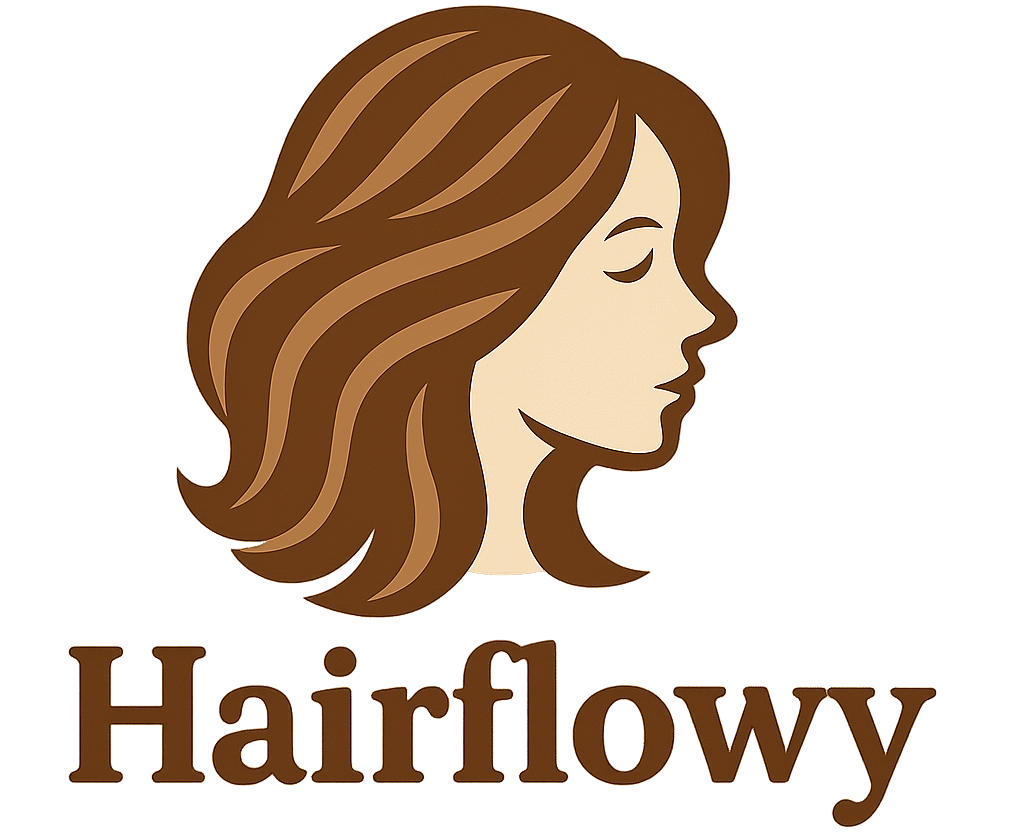We’ve all dreamed of achieving that perfect platinum blonde look that turns heads and radiates confidence. The lightest blonde hair shades represent the ultimate in hair transformation – a striking change that can completely redefine your appearance and boost your self-esteem.
But here’s the reality: achieving the lightest blonde isn’t just about walking into a salon and asking for “the lightest color possible.” It’s a complex process that requires careful planning, professional expertise, and ongoing maintenance to keep your locks looking healthy and vibrant.
Whether you’re considering making the leap from brunette to ice blonde or you’re already blonde and want to go even lighter, we’re here to guide you through everything you need to know. From understanding the bleaching process to maintaining your new color, we’ll help you achieve that coveted lightest blonde hair while keeping damage to a minimum.
Understanding the Lightest Blonde Hair Shades Available
Achieving the ultimate light blonde requires understanding the exact shades that fall within this coveted color family. We’ll explore the technical classifications and distinctions that define the lightest blonde hair colors available today.
Platinum Blonde: The Ultimate Light Shade
Platinum blonde represents the pinnacle of light hair colors, sitting at the very top of the blonde spectrum. This shade eliminates nearly all yellow and orange undertones, creating a silvery white appearance that reflects light beautifully. Professional colorists achieve platinum blonde through multiple bleaching sessions that lift hair to level 10 or 11 on the lightening scale.
The process typically requires 2-4 appointments spaced weeks apart to prevent severe damage. We recommend starting with naturally light brown or blonde hair for the best results, as darker starting colors need more aggressive lightening. Platinum blonde works exceptionally well on cool skin tones and requires purple or blue toning shampoos to maintain its pristine appearance.
Level 10 Blonde: Professional Color Classification
Level 10 blonde serves as the professional standard for the lightest achievable natural blonde shade. Hair colorists use a numbering system from 1 (black) to 10 (lightest blonde) to classify color depth, with level 10 representing maximum lightness. This classification helps professionals communicate precisely about color goals and formulate appropriate bleaching treatments.
Most commercial hair bleaches can lift natural hair to level 10 with proper application and timing. The shade appears as a very pale yellow blonde with minimal warmth, providing the perfect base for toning into cooler shades. We find that level 10 blonde requires less maintenance than ultra light platinum shades while still delivering dramatic lightness.
White Blonde vs. Ice Blonde Distinctions
White blonde and ice blonde represent two distinct approaches to ultra light hair coloring with subtle but important differences. White blonde aims for complete color neutrality, appearing almost colorless with no visible undertones or tints. This shade requires extensive bleaching followed by high lift toners to remove every trace of warmth.
Ice blonde incorporates deliberate cool undertones, typically blue or violet, to create a frosty appearance. The shade appears slightly tinted compared to white blonde but offers more dimension and visual interest. We often recommend ice blonde for clients who want extreme lightness with added sophistication, as the cool undertones complement most skin tones better than stark white shades.
Both shades demand professional application and regular toning treatments every 4-6 weeks to maintain their integrity. The choice between white and ice blonde often comes down to personal preference and lifestyle factors, as both require important commitment to upkeep.
Achieving Lightest Blonde Hair Through Professional Bleaching
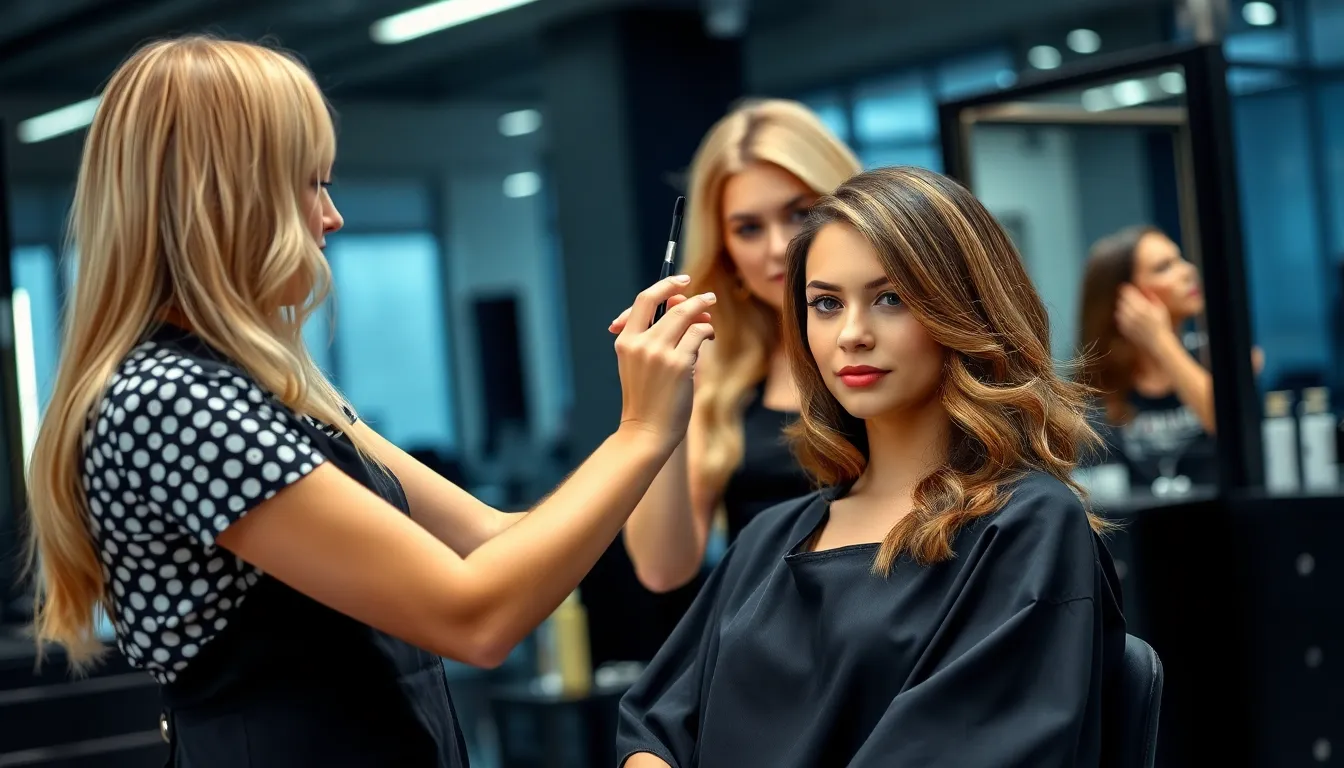
Professional bleaching transforms darker hair into stunning platinum shades through advanced chemical processes. We recommend this method as the most effective way to reach your lightest blonde goals safely.
Multi-Session Bleaching Process Requirements
Multiple bleaching sessions protect your hair while achieving maximum lightening results. Professional colorists typically schedule 2-3 appointments spaced several weeks apart to minimize damage and maintain hair integrity. Each session can lighten natural hair by up to six color tones using alkaline agents and persulfates that dissolve melanin effectively.
Darker hair colors require more sessions to reach platinum levels. Brown hair particularly benefits from this gradual approach since forcing dramatic color changes in one visit often leads to severe breakage. We’ve found that patience during this process yields healthier and more vibrant results.
Recovery time between sessions allows your hair cuticles to repair and strengthen. Stylists assess hair condition before each appointment to determine if additional processing is safe. This careful monitoring prevents over-bleaching that could compromise your hair’s structural integrity.
Toner Application for Perfect Light Results
Toners eliminate unwanted brassy and yellow undertones after bleaching is complete. These specialized products contain purple or blue pigments that neutralize warm tones and create the cool, silvery finish characteristic of platinum blonde hair. Professional toners offer more precise color correction than drugstore alternatives.
Ash and platinum toners create different variations of light blonde shades. Ash toners produce cooler, grayer blonde tones while platinum toners deliver that coveted silvery white appearance. We work with clients to select the perfect toner based on their skin tone and personal preferences.
Regular toner touch-ups maintain your light blonde color between appointments. Most professional toners fade gradually over 4-6 weeks, requiring periodic reapplication to preserve your desired shade. This maintenance step is crucial for keeping brassy tones at bay.
Professional vs. At-Home Bleaching Considerations
Salon professionals provide precise control and safety measures that home kits cannot match. Licensed colorists understand how different hair types respond to bleaching chemicals and can adjust formulations accordingly. They also monitor the process continuously to prevent over-processing damage.
At-home bleaching kits offer convenience and cost savings but come with important risks. These products lack the customization options available in professional settings and may produce uneven or unpredictable results. We’ve seen many clients seek corrective treatments after unsuccessful DIY attempts.
Professional expertise becomes essential when lightening dark hair to platinum levels. The complex chemical processes involved require technical knowledge and experience to execute safely. Salon professionals can also provide immediate damage control if complications arise during treatment.
Maintaining Lightest Blonde Hair Color Integrity
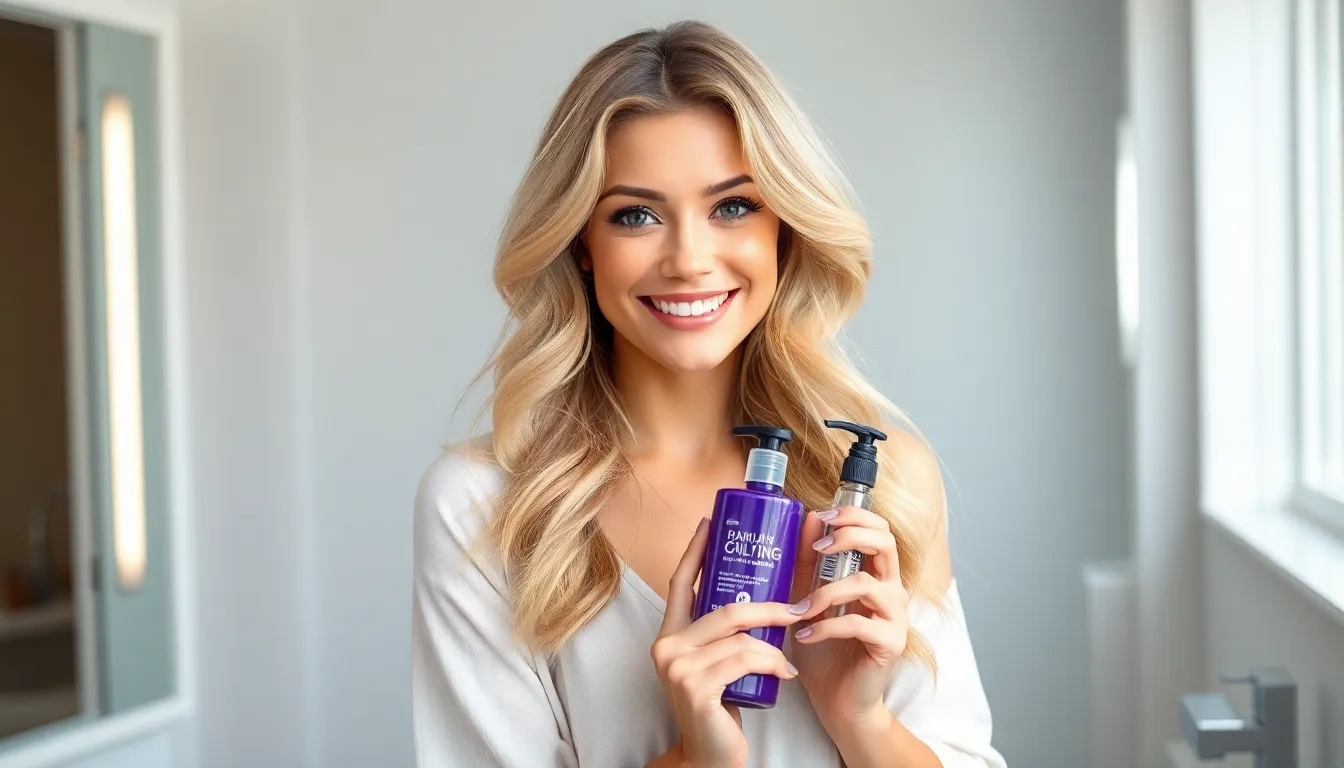
Once you’ve achieved your stunning platinum shade, we need to focus on preserving that perfect color and keeping your hair healthy. Regular maintenance routines will protect your investment and ensure your lightest blonde remains vibrant.
Purple Shampoo Usage and Benefits
Purple shampoos are essential for our lightest blonde hair maintenance routine. These specialized products neutralize brassy tones that naturally develop over time, preventing the yellow discoloration that can dull our platinum shade. We should use purple shampoo regularly to maintain color integrity and keep our blonde looking fresh between salon appointments.
Toning foams offer us a convenient no-mess alternative to traditional purple shampoos. These innovative products neutralize yellow tones instantly on both wet and dry hair, giving us flexibility in our maintenance routine. We can apply these foams whenever we notice unwanted warmth creeping into our blonde color.
Deep Conditioning Treatment Essentials
Deep conditioning treatments become crucial for our lightest blonde hair, especially after the bleaching process. Weekly applications of intensive moisture masks like Chris Appleton’s Money Masque help replenish lost hydration and strengthen our hair strands. These treatments combat the dryness that’s common with platinum blonde hair.
Moisturizing shampoos and conditioners should be our daily go-to products for maintaining healthy lightest blonde hair. We need to prioritize hydration in our routine since bleached hair tends to lose moisture more quickly than untreated hair. Regular deep conditioning prevents brittleness and maintains the soft texture we want.
Heat Protection and Styling Precautions
Heat styling limitations become more important when we have lightest blonde hair that’s been through the bleaching process. We should minimize our use of hot tools or choose styling equipment designed to reduce heat damage, such as the Ion Pro Blow Dryer. This approach helps preserve our hair’s integrity while maintaining our desired style.
Heat protectants like ThermalStyleHer Cream must be applied before every hot tool session. These products create a barrier between our delicate blonde strands and damaging heat, preventing further weakening of our already processed hair. We can’t skip this step if we want to maintain healthy lightest blonde hair while still enjoying styled looks.
Determining Your Hair’s Lightest Blonde Potential

Understanding your hair’s natural characteristics helps us set realistic expectations for achieving the lightest blonde shades. We’ll evaluate key factors that influence how light your hair can safely go.
Natural Hair Color Starting Point Assessment
Starting hair color determines how many lightening sessions you’ll need to reach your desired blonde shade. Individuals with light brown or darker blonde hair typically achieve platinum results faster than those with black or deep brown hair. Previously colored hair requires special consideration since existing chemical treatments can affect how your hair responds to bleaching processes.
Multiple bleaching sessions become necessary when transitioning from darker base colors. We recommend waiting 4-6 weeks between sessions to maintain hair integrity during the lightening journey. Natural blonde hair often needs only 1-2 sessions while darker hair may require 3-4 professional appointments to reach level 10 blonde safely.
Hair Texture and Porosity Factors
Hair texture significantly impacts your lightening timeline and results. Fine hair processes faster during bleaching but requires gentler formulations to prevent breakage. Coarse hair resists lightening more aggressively and may need stronger bleaching agents or longer processing times.
Porosity levels affect how your hair absorbs and retains blonde color. High porosity hair drinks up bleach quickly but may also fade faster once toned. Low porosity hair takes longer to lighten but typically holds color longer between touch-ups.
| Hair Type | Processing Time | Sessions Needed | Maintenance Frequency |
|---|---|---|---|
| Fine Hair | 15-25 minutes | 2-3 sessions | Every 6-8 weeks |
| Coarse Hair | 30-45 minutes | 3-4 sessions | Every 8-10 weeks |
| High Porosity | 20-30 minutes | 2-3 sessions | Every 4-6 weeks |
| Low Porosity | 35-50 minutes | 3-4 sessions | Every 8-12 weeks |
Realistic Expectations for Different Hair Types
Fine hair achieves lighter blonde shades with careful processing but requires extra protection during bleaching. We recommend using bond-building treatments like Olaplex during sessions to maintain hair strength. Wella’s Illumina Color 10/ Lightest Blonde works excellently on fine hair textures.
Coarse hair handles more aggressive lightening treatments while still reaching stunning platinum results. Multiple sessions spread over several months ensure we don’t compromise your hair’s health. Garnier’s Olia Lightest Cool Blonde provides good coverage for coarse hair seeking DIY options.
Curly hair presents unique challenges due to uneven porosity along each strand. Professional colorists use specialized techniques to ensure consistent lightening throughout curly textures. We often recommend lower volume developers and longer processing times for curly hair to achieve even results without damage.
Styling Tips for Lightest Blonde Hair Success
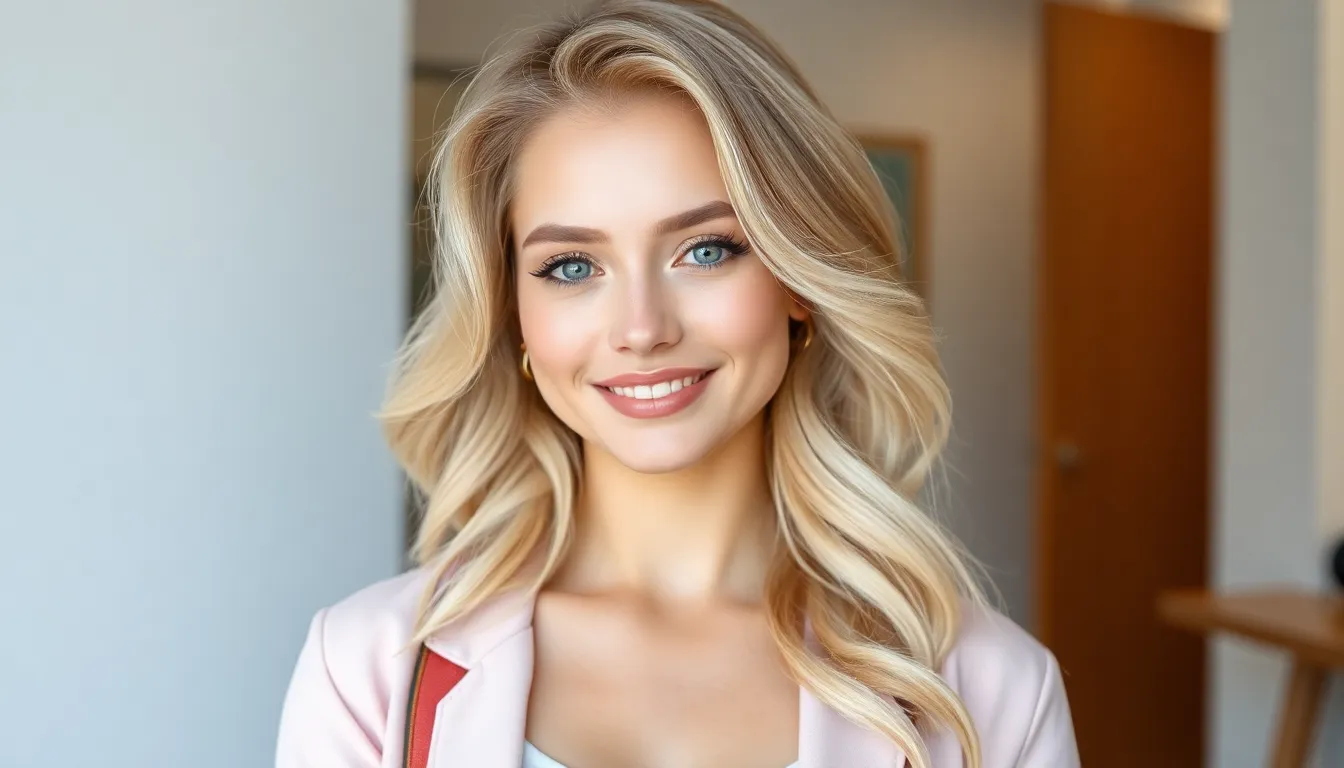
Mastering the art of styling your new platinum locks goes beyond just hair care. We’ll explore how to enhance your lightest blonde with makeup choices, wardrobe selections, and hairstyles that make your color pop.
Complementary Makeup Colors and Techniques
Natural looks work beautifully with lightest blonde hair by creating a soft, effortless appearance. We recommend opting for neutral or soft pink shades on your lips and cheeks to complement your light blonde tones without competing for attention.
Bold eyes become your canvas when you’ve achieved platinum perfection. Use light to medium shades of eyeshadow to enhance your eyes while maintaining balance with your hair color. These moderate tones prevent your makeup from overpowering your stunning blonde transformation.
Soft liner application frames your eyes with subtle definition that enhances rather than dominates. Apply light brown or gray eyeliner instead of harsh black to create gentle contrast that works harmoniously with your platinum tones.
Wardrobe Choices That Enhance Light Blonde
Pastel colors create stunning harmony with your lightest blonde achievement. Soft pastels like pale pink or baby blue complement your platinum tones by creating a cohesive, dreamy aesthetic that showcases your hair transformation.
Neutral tones serve as the perfect backdrop for highlighting your blonde brilliance. Earthy tones and whites help bring out the brightness of your platinum color by providing subtle contrast that makes your hair the focal point.
Metallic accents add sophisticated dimension to your overall look. Subtle metallic touches in silver or gold enhance the cool tones of your platinum blonde while adding luxurious elements to your styling choices.
Hairstyles That Showcase Platinum Tones
Balayage and babylights techniques create natural dimension that maximizes your platinum investment. These highlighting methods produce sun-kissed effects that add depth and movement to your lightest blonde hair while maintaining the overall light appearance you’ve worked to achieve.
Layered cuts provide essential volume and face-framing benefits that draw attention to your color transformation. Strategic layering helps maintain body in your platinum hair while creating movement that showcases the multidimensional aspects of your lightest blonde shade.
Soft waves enhance your platinum tones through gentle texture and movement. Create these effortless waves using a curling iron or wand to add dimension without overwhelming your delicate blonde color or compromising the hair health you’ve worked to preserve.
Common Mistakes When Going Lightest Blonde
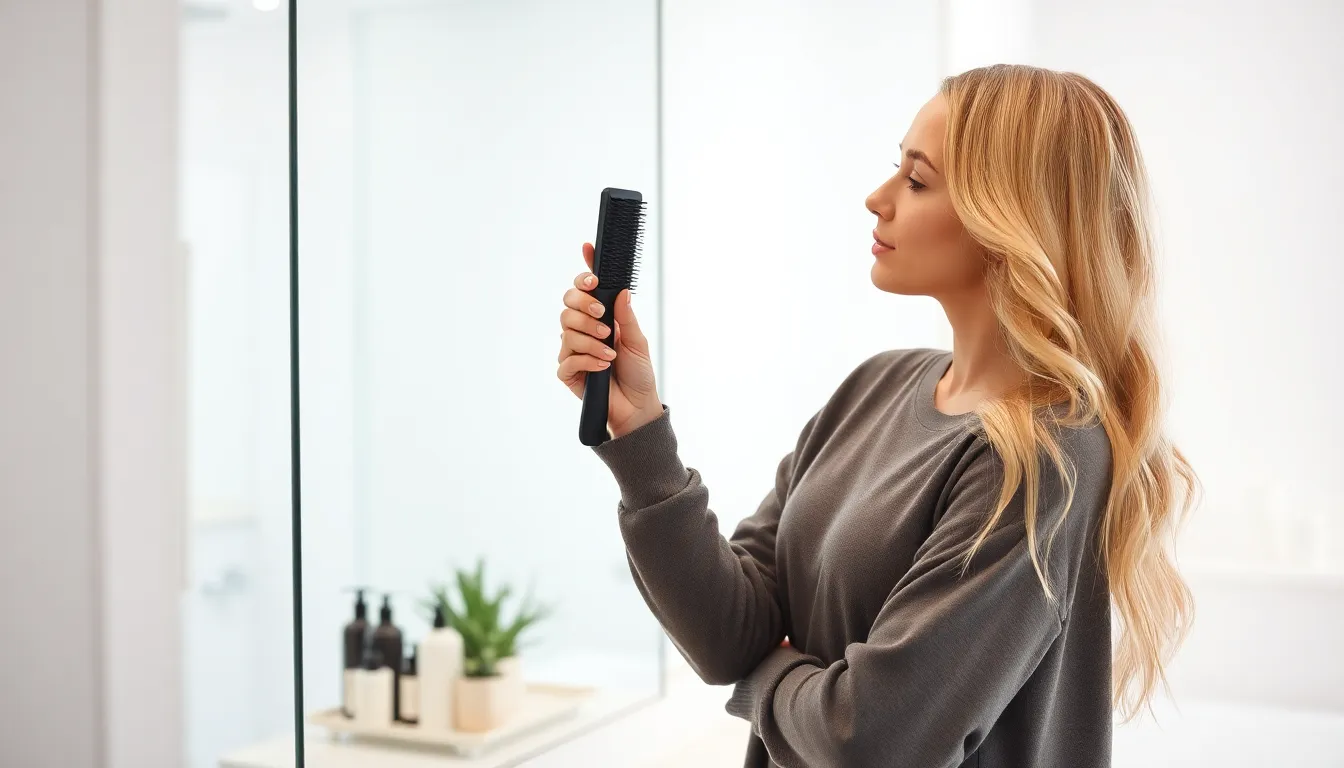
We’ve seen countless hair transformations go wrong when people rush into achieving platinum blonde without proper preparation. Understanding these common pitfalls helps us make informed decisions and protect our hair throughout the lightening journey.
Over-Processing and Damage Prevention
Over-processing stands as the most damaging mistake we encounter when lightening hair to platinum shades. Bleach and strong lighteners break down hair’s protein structure, and excessive processing leads to dryness, brittleness, and breakage that can take months to repair.
Monitoring processing time becomes crucial during each bleaching session. We should never exceed recommended development times, even if our hair hasn’t reached the desired lightness level. Multiple gentle sessions always produce better results than one aggressive treatment.
Protective treatments before and after lightening help maintain hair integrity. Deep conditioning masks applied 24-48 hours before bleaching create a protective barrier around each strand. Post-bleaching protein treatments rebuild damaged cuticles and restore elasticity.
Strand testing reveals our hair’s processing capabilities without risking full-head damage. We recommend testing a small hidden section first to determine optimal timing and chemical strength. This simple step prevents over-processing disasters and helps us adjust our approach accordingly.
Incorrect Toner Selection Issues
Toner selection mistakes create unwanted color results that can be challenging to correct. Choosing the wrong toner shade often results in brassy orange tones, muddy ash colors, or overly cool platinum that appears gray against our skin tone.
Understanding color theory prevents toner disasters during the lightening process. Purple-based toners neutralize yellow undertones, while blue-based options counteract orange hues. We need to assess our hair’s underlying pigments before selecting the appropriate toner formula.
Professional toners offer more precise color correction than drugstore alternatives. Salon-grade products contain higher concentrations of pigments and gentler formulations that won’t further damage bleached hair. We achieve more consistent results with professional-grade toning systems.
Color wheel knowledge helps us choose complementary toner shades effectively. Opposite colors on the wheel cancel each other out, so identifying our hair’s unwanted tones guides us toward the correct neutralizing shade. This understanding prevents the guesswork that leads to disappointing results.
Unrealistic Timeline Expectations
Expecting immediate platinum results often leads to severe hair damage and disappointment. Lightening dark hair to the lightest blonde shades typically requires 2-3 professional sessions spaced 2-4 weeks apart to maintain hair health and integrity.
Each bleaching session can only safely lift hair by 3-4 levels without causing excessive damage. We must respect our hair’s natural limitations and allow proper recovery time between appointments. Rushing this process inevitably results in compromised hair quality.
Starting hair color directly impacts the number of sessions needed for platinum blonde. Dark brown hair requires significantly more processing time than medium blonde, and we should adjust our expectations accordingly. Patient clients always achieve healthier, more vibrant results.
Recovery periods between sessions allow hair to rebuild strength and moisture. We recommend waiting at least two weeks between bleaching appointments to prevent cumulative damage. During these intervals, intensive conditioning treatments help restore hair’s natural protective barriers.
Celebrity Inspiration for Lightest Blonde Hair

Stars continue to influence our hair color choices, particularly when it comes to achieving the lightest blonde shades. We’ve watched countless celebrities transform their look with platinum and ultra-light blonde tones that capture attention everywhere they go.
Iconic Platinum Blonde Looks
Platinum blonde remains one of the most sought-after celebrity hair trends, with legends like Marilyn Monroe setting the standard decades ago. Britney Spears carried this iconic look into the modern era, proving that platinum blonde never goes out of style. We see how this striking, icy blonde color continues to symbolize glamour and sophistication across generations. Stars who choose platinum blonde create an instantly recognizable signature look that photographs beautifully under any lighting. This timeless shade requires professional expertise to achieve safely, which is why celebrities work with top colorists to maintain their stunning platinum transformations.
Red Carpet Light Blonde Transformations
Red carpet events showcase some of the most dramatic light blonde debuts we’ve ever witnessed. Jennifer Lawrence and Taylor Swift have both surprised fans with lighter shades at high-profile events, often sparking widespread hair color trends. Emma Stone, Chrissy Teigen, and Gigi Hadid have notably sported light blonde looks that draw attention and inspire countless fans to book salon appointments. We notice how these transformations often coincide with major movie premieres or award shows, creating maximum impact. Professional colorists work months in advance to prepare these dramatic changes, ensuring the hair remains healthy throughout the lightening process.
Social Media Influencer Blonde Trends
Social media platforms have revolutionized how we discover and follow light blonde trends through influencer content. Instagram feeds overflow with before-and-after photos showing dramatic transformations to the lightest blonde shades possible. We see influencers sharing their hair journeys in real time, documenting multiple bleaching sessions and toner applications. Platforms like TikTok feature countless tutorials on achieving perfect light blonde color, though we always recommend professional application for best results. Influencers often partner with brands like Wella and Garnier to showcase products such as Wella’s Illumina Color 10 and Garnier’s Olia Lightest Cool Blonde, which provide up to 100% gray coverage and luminous finishes.
Cost Considerations for Lightest Blonde Hair

Achieving the lightest blonde shade represents a important financial investment that extends well beyond the initial salon visit. We’ll break down the complete cost structure to help you plan your platinum blonde transformation.
Salon Treatment Investment Requirements
Professional platinum blonde services typically cost $139 for a basic bleach and tone session, though achieving the lightest shades often requires $150 to $400 per visit. Multiple appointments become necessary for darker starting hair colors, with each session building upon the previous lightening process.
Experienced stylists in premium locations command higher fees, reflecting their expertise in safely executing complex bleaching procedures. We’ve found that investing in skilled professionals prevents costly damage repairs and delivers superior results compared to budget alternatives.
Location significantly impacts pricing structures, with metropolitan salons charging premium rates while suburban locations offer more competitive pricing. Session complexity increases costs when your natural hair requires extensive lightening to reach platinum levels.
Ongoing Maintenance Expense Planning
Regular touch up appointments occur every 4 to 8 weeks, adding $50 to $100 per session to your beauty budget. Root retouching becomes essential as natural hair growth creates visible color contrast against your platinum shade.
Toner refresh treatments maintain color vibrancy and eliminate brassiness between major appointments. We recommend budgeting approximately $600 to $1,200 annually for complete maintenance routines including touch ups and specialized treatments.
Professional conditioning treatments combat dryness and damage, typically costing $30 to $75 per session. Home care products specifically formulated for platinum blonde hair add monthly expenses of $40 to $80 for quality shampoos, conditioners, and styling products.
Budget-Friendly Alternatives and Options
At home coloring kits offer initial cost savings but rarely achieve salon quality results for dramatic lightening transformations. DIY attempts risk severe damage requiring expensive corrective treatments that exceed professional service costs.
Partial highlights reduce expenses while creating dimensional blonde effects, with pricing between $75 and $250 depending on coverage area and technique complexity. This approach allows gradual lightening over multiple sessions, spreading costs across extended timeframes.
Balayage techniques range from $150 to $300 but require fewer touch ups than traditional highlights, creating long term savings. Seasonal color changes instead of permanent platinum commitment reduce maintenance frequency and associated expenses.
Group appointments or training model sessions at cosmetology schools provide supervised professional services at reduced rates. We’ve seen savings of 30% to 50% through these educational programs while still receiving quality results.
Conclusion
Achieving the lightest blonde hair we’ve always dreamed of isn’t just about the destination—it’s about embracing the journey with patience and professional guidance. We’ve explored everything from the technical aspects of bleaching to the ongoing maintenance that keeps our platinum locks looking flawless.
The investment in time money and proper care pays off when we see that stunning silvery-white transformation in the mirror. Remember that our hair’s unique characteristics determine the path we’ll take and the realistic expectations we should set.
With the right professional support maintenance routine and styling choices we can confidently rock the lightest blonde shade while keeping our hair healthy and vibrant. The key lies in understanding our hair’s needs and never rushing the process.
Frequently Asked Questions
What is platinum blonde hair and how is it different from other blonde shades?
Platinum blonde is the lightest possible blonde shade, characterized by its silvery-white appearance with virtually no yellow undertones. Unlike regular blonde hair, platinum blonde requires multiple bleaching sessions to reach level 10+ on the professional color scale. It’s achieved through extensive lightening and precise toner application to eliminate all warmth, creating an icy, metallic finish that’s more dramatic than standard blonde colors.
How many bleaching sessions does it take to achieve platinum blonde hair?
Most people need 2-3 professional bleaching sessions spaced 2-3 weeks apart to safely achieve platinum blonde. Each session can lighten hair up to 6 levels. Dark brown or black hair may require additional sessions, while naturally lighter hair might achieve the desired result in fewer appointments. The exact number depends on your starting color, hair texture, and desired final shade.
Can I achieve platinum blonde hair at home with DIY kits?
While at-home bleaching kits exist, achieving true platinum blonde is extremely risky without professional expertise. DIY attempts often result in severe damage, breakage, or uneven color. The complex chemical processes require precise timing, proper product selection, and damage assessment skills that professionals possess. For platinum blonde, professional application is strongly recommended to ensure hair health and desired results.
How much does it cost to get platinum blonde hair professionally?
Professional platinum blonde services typically cost $150-$400 per initial visit, depending on your location and salon. Maintenance appointments every 4-8 weeks cost $50-$100 for touch-ups and toner refreshing. Budget-friendly alternatives include partial highlights or balayage techniques, and some savings can be found through cosmetology school services or group appointments.
What maintenance is required for platinum blonde hair?
Platinum blonde requires regular maintenance including purple shampoo 2-3 times weekly to prevent brassiness, deep conditioning treatments, and professional toner touch-ups every 4-8 weeks. Use heat protectants before styling, minimize hot tool usage, and apply moisturizing products daily. Regular trims help maintain healthy ends, and UV protection prevents color fading from sun exposure.
How long should I wait between bleaching sessions?
Wait at least 2-3 weeks between bleaching sessions to allow your hair to recover and rebuild strength. This recovery period is crucial for preventing severe damage, breakage, and maintaining hair integrity. During this time, focus on deep conditioning treatments and gentle hair care. Some hair types may need longer recovery periods, which your stylist will assess.
What are the biggest mistakes people make when going platinum blonde?
Common mistakes include over-processing hair in one session, skipping strand tests, using incorrect toner shades, and having unrealistic timeline expectations. Many people attempt DIY bleaching on dark hair, choose wrong product strengths, or neglect proper aftercare routines. Poor color theory understanding leads to unwanted results, and rushing the process often causes irreversible damage requiring corrective treatments.
How can I tell if my hair can handle platinum blonde lightening?
Your hair’s suitability depends on natural color, texture, and porosity. Fine hair processes faster but needs gentler formulations, while coarse hair requires stronger products. Previously chemically treated hair may be more fragile. A professional consultation including strand tests will assess your hair’s condition and determine realistic expectations for achieving platinum blonde safely.
What styling tips work best for platinum blonde hair?
Complement platinum blonde with natural makeup using soft pinks and neutral tones. Choose pastel or neutral wardrobe colors to highlight the hair. Opt for hairstyles like balayage, layered cuts, or soft waves that showcase dimension. Avoid harsh styling techniques, use silk pillowcases to prevent friction, and consider protective hairstyles when swimming or in harsh weather conditions.
How do I prevent my platinum blonde from turning brassy?
Use purple or blue-toned shampoo 2-3 times weekly to neutralize yellow and orange undertones. Apply toning foam for instant color correction between salon visits. Protect hair from UV rays with products containing sun protection, avoid chlorinated water, and use color-safe products. Regular professional toner touch-ups every 4-8 weeks maintain the cool, silvery tone of platinum blonde hair.
